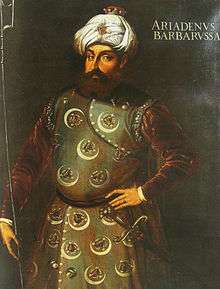Hayreddin Barbarossa
| Hayreddin Barbarossa | |
|---|---|
|
A portrait of Hayreddin Barbarossa | |
| Nickname(s) |
Barbarossa (Red Beard) Hayreddin Hızır Reis |
| Born |
c. 1478 Mytilene, Lesbos, Ottoman Empire |
| Died |
4 July 1546 (aged 67–68) Constantinople, Ottoman Empire |
| Allegiance |
|
| Service/branch |
|
| Years of service | c. 1500–1545 |
| Rank | Admiral |
Hayreddin Barbarossa (Arabic: Khayr ad-Din Barbarus خير الدين بربروس), (Latin: Ariadenus Barbarussa), or Barbarossa Hayreddin Pasha (Turkish: Barbaros Hayreddin (Hayrettin) Paşa or Hızır Hayreddin (Hayrettin) Paşa; also Hızır Reis before being promoted to the rank of Pasha and becoming the Kapudan Pasha), born Khizr or Khidr (Turkish: Hızır; c. 1478 – 4 July 1546), was an Ottoman admiral of the fleet who was born on the island of Lesbos and died in Constantinople, the Ottoman capital. Barbarossa's naval victories secured Ottoman dominance over the Mediterranean during the mid 16th century, from the Battle of Preveza in 1538 until the Battle of Lepanto in 1571.
Hayreddin (Arabic: Khayr ad-Din خيرالدين, which literally means "goodness" or "best of the religion" of Islam) was an honorary name given to him by Sultan Suleiman the Magnificent. He became known as "Barbarossa" ("Redbeard" in Italian) in Europe, a name he inherited from his elder brother Oruç Reis after he was killed in a battle with the Spanish in Algeria. Oruç was also known as "Baba Oruç", which sounded like "Barbarossa" (Italian for "Redbeard") to the Europeans, and since Oruç did have a red beard, the nickname stuck. In a process of linguistic reborrowing, the nickname then stuck back to Hayreddin's native Turkish name, in the form Barbaros.
Background
Khizr was born in 1466[1] or around 1478 in the village Palaiokipos on the Ottoman island of Midilli (Lesbos) (now Greece), the son of Yakup Ağa, a converted Turk sipahi[2] of Albanian origin[1][3] from Giannitsa (Greece), and an Orthodox Christian, Greek woman from Mytilene (Lesbos).[4] His mother was a widow of a Greek Orthodox priest.[2][3][5] His parents were married[4] and had two daughters and four sons: Ishak, Oruç, Khizr and Ilyas. Yakup took part in the Ottoman conquest of Lesbos in 1462 from the Genoese Gattilusio dynasty (who held the hereditary title of Lord of Lesbos between 1355 and 1462) and as a reward, was granted the fief of the Bonova village in the island. He became an established potter and purchased a boat to trade his products. The four sons helped their father with his business, but not much is known about the daughters. At first Oruç helped with the boat, while Khizr helped with pottery.
Early career
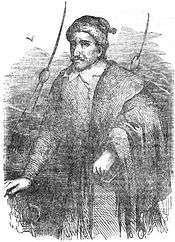
All four brothers became seamen, engaged in marine affairs and international sea trade. The first brother to become involved in seamanship was Oruç, who was joined by his brother Ilyas. Later, obtaining his own ship, Khizr also began his career at sea. The brothers initially worked as sailors, but then turned privateers in the Mediterranean to counteract the privateering of the Knights Hospitaller (Knights of St. John) who were based in the island of Rhodes (until 1522). Oruç and Ilyas operated in the Levant, between Anatolia, Syria, and Egypt. Khizr operated in the Aegean Sea and based his operations mostly in Thessaloniki. Ishak, the eldest, remained on Mytilene and was involved with the financial affairs of the family business.
Death of Ilyas, captivity and liberation of Oruç
Oruç was a very successful seaman. He also learned to speak Italian, Spanish, French, Greek and Arabic in the early years of his career. While returning from a trading expedition in Tripoli, Lebanon, with his younger brother Ilyas, they were attacked by the Knights of St. John. Ilyas was killed in the fight, and Oruç was wounded. Their father's boat was captured, and Oruç was taken as a prisoner and detained in the Knights' castle at Bodrum for nearly three years. Upon learning the location of his brother, Khizr went to Bodrum and managed to help Oruç escape.
Oruç the corsair

Oruç later went to Antalya, where he was given 18 galleys by the Şehzade Korkut, an Ottoman prince and governor of the city, and charged with fighting against the Knights of St. John, who were inflicting serious damage on Ottoman shipping and trade. In the following years, when Korkut became governor of Manisa, he gave Oruç a larger fleet of 24 galleys at the port of İzmir and ordered him to participate in the Ottoman naval expedition to Apulia in Italy, where Oruç bombarded several coastal castles and captured two ships. On his way back to Lesbos, he stopped at Euboea and captured three galleons and another ship. Reaching Mytilene with these captured vessels, Oruç learned that Korkut, who was the brother of the new Ottoman sultan Selim I, had fled to Egypt in order to avoid being killed because of succession disputes – a common practice at that time. Fearing trouble due to his well-known association with the exiled Ottoman prince, Oruç sailed to Egypt, where he met Korkut in Cairo and managed to get an audience with the Mamluk Sultan Qansuh al-Ghawri, who gave him another ship and appointed him with the task of raiding the coasts of Italy and the islands of the Mediterranean that were controlled by Christians. After passing the winter in Cairo, he set sail from Alexandria and frequently operated along the coasts of Liguria and Sicily.
Khizr's career under Oruç
In 1503, Oruç managed to seize three more ships and made the island of Djerba his new base, thus moving his operations to the Western Mediterranean. Khizr joined Oruç at Djerba. In 1504, the brothers contacted Abu Abdullah Mohammed Hamis, Sultan of Tunisia from the Beni Hafs dynasty, and asked permission to use the strategically located port of La Goulette for their operations. They were granted this right with the condition of leaving one-third of their gains to the sultan. Oruç, in command of small galliots, captured two much larger Papal galleys near the island of Elba. Later, near Lipari, the two brothers captured a Sicilian warship, the Cavalleria, with 380 Spanish soldiers and 60 Spanish knights from Aragon on board, who were on their way from Spain to Naples. In 1505, they raided the coasts of Calabria. These accomplishments increased their fame, and they were joined by several other well-known Muslim corsairs, including Kurtoğlu (known in the West as Curtogoli). In 1508, they raided the coasts of Liguria, particularly Diano Marina.
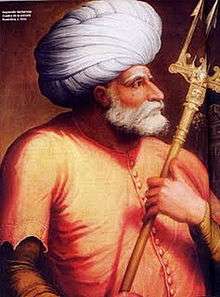
In 1509, Ishak also left Mytilene and joined his brothers at La Goulette. The fame of Oruç increased when, between 1504 and 1510, he transported Muslim Mudéjars from Christian Spain to North Africa. His efforts of helping the Muslims of Spain in need and transporting them to safer lands earned him the honorific name Baba Oruç (Father Oruç), which eventually – due the similarity in sound – evolved in Spain, France and Italy into Barbarossa (meaning "Redbeard" in Italian).
In 1510, the three brothers raided Cape Passero in Sicily and repulsed a Spanish attack on Bougie, Oran and Algiers. In August 1511, they raided the areas around Reggio Calabria in southern Italy. In August 1512, the exiled ruler of Bougie invited the brothers to drive out the Spaniards, and during the battle, Oruç lost his left arm. This incident earned him the nickname Gümüş Kol ("Silver Arm" in Turkish), in reference to the silver prosthetic device that he used in place of his missing limb. Later that year, the three brothers raided the coasts of Andalusia in Spain, capturing a galliot of the Lomellini family of Genoa, who owned the Tabarca island in that area. They subsequently landed on Minorca and captured a coastal castle and then headed towards Liguria, where they captured four Genoese galleys near Genoa. The Genoese sent a fleet to liberate their ships, but the brothers captured their flagship as well. After capturing a total of 23 ships in less than a month, the brothers sailed back to La Goulette.
There, they built three more galliots and a gunpowder production facility. In 1513, they captured four English ships on their way to France, raided Valencia, where they captured four more ships, and then headed for Alicante and captured a Spanish galley near Málaga. In 1513 and 1514, the three brothers engaged the Spanish fleet on several other occasions and moved to their new base in Cherchell, east of Algiers. In 1514, with 12 galliots and 1,000 Turks, they destroyed two Spanish fortresses at Bougie, and when the Spanish fleet under the command of Miguel de Gurrea, viceroy of Majorca, arrived for assistance, they headed towards Ceuta and raided that city before capturing Jijel in Algeria, which was under Genoese control. They later captured Mahdiya in Tunisia. Afterwards, they raided the coasts of Sicily, Sardinia, the Balearic Islands and the Spanish mainland, capturing three large ships there. In 1515, they captured several galleons, a galley and three barques at Majorca. Still in 1515, Oruç sent precious gifts to the Ottoman Sultan Selim I, who, in return, sent him two galleys and two swords embellished with diamonds. In 1516, joined by Kurtoğlu (Curtogoli), the brothers besieged the Castle of Elba, before heading once more towards Liguria, where they captured 12 ships and damaged 28 others.
Rulers of Algiers
In 1516, the three brothers succeeded in capturing Jijel and Algiers from the Spaniards but eventually assumed control over the city and surrounding region, forcing the previous ruler, Abu Hamo Musa III of the Beni Ziyad dynasty, to flee. The Spaniards in Algiers sought refuge on the island of Peñón off the Moroccan coast and asked Charles V, King of Spain and Holy Roman Emperor, to intervene, but the Spanish fleet failed to force the brothers out of Algiers.
Algiers joins the Ottoman Empire
After consolidating his power and declaring himself Sultan of Algiers, Oruç sought to enhance his territory inland and took Miliana, Medea and Ténès. He became known for attaching sails to cannons for transport through the deserts of North Africa. In 1517, the brothers raided Capo Limiti and later, the Island of Capo Rizzuto in Calabria.
For Oruç, the best protection against Spain was to join the Ottoman Empire, his homeland and Spain's main rival. For this, he had to relinquish his title of Sultan of Algiers to the Ottomans. He did this in 1517 and offered Algiers to the Ottoman Sultan Selim I. The Sultan accepted Algiers as an Ottoman sanjak ("province"), appointed Oruç as the Governor of Algiers and Chief Sea Governor of the West Mediterranean, and promised to support him with janissaries, galleys and cannons.
Final engagements and death of Oruç and Ishak
The Spaniards ordered Abu Zayan, whom they had appointed as the new ruler of Tlemcen and Oran, to attack Oruç Reis from land, but Oruç learned of the plan and pre-emptively struck against Tlemcen, capturing the city and executing Abu Zayan in the Fall of Tlemcen (1517). The only survivor of Abu Zayan's dynasty was Sheikh Buhammud, who escaped to Oran and called for Spain's assistance.
In May 1518, Emperor Charles V arrived at Oran and was received at the port by Sheikh Buhammud and the Spanish governor of the city, Diego de Córdoba, marquess of Comares, who commanded a force of 10,000 Spanish soldiers. Joined by thousands of local Bedouins, the Spaniards marched overland towards Tlemcen. Oruç and Ishak awaited them in the city with 1,500 Turkish and 5,000 Moorish soldiers. They defended Tlemcen for 20 days, but were eventually killed in combat by the forces of Garcia de Tineo.
Khizr Reis, now given the title of Beylerbey by Sultan Selim I, along with janissaries, galleys and cannons, inherited his brother's place, his name (Barbarossa) and his mission.
Later career
Pasha of Algiers
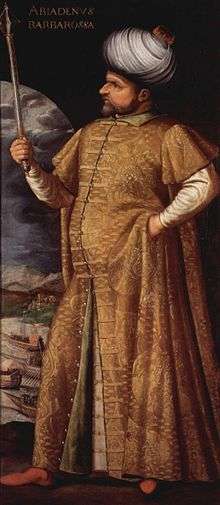
With a fresh force of Turkish soldiers sent by the Ottoman sultan, Barbarossa recaptured Tlemcen in December 1518. He continued the policy of bringing Mudéjars from Spain to North Africa, thereby assuring himself of a sizable following of grateful and loyal Muslims, who harbored an intense hatred for Spain. He captured Bone, and in 1519, he defeated a Spanish-Italian army that tried to recapture Algiers. In a separate incident, he sank a Spanish ship and captured eight others. Still in 1519, he raided Provence, Toulon and the Îles d'Hyères in southern France. In 1521, he raided the Balearic Islands and later captured several Spanish ships returning from the New World off Cadiz. In 1522, he sent his ships, under the command of Kurtoğlu, to participate in the Ottoman conquest of Rhodes, which resulted in the departure of the Knights of St. John from that island on 1 January 1523.
In June 1525, he raided the coasts of Sardinia. In May 1526, he landed at Crotone in Calabria and sacked the city, sank a Spanish galley and a Spanish fusta in the harbor, assaulted Castignano in Marche on the Adriatic Sea and later landed at Cape Spartivento. In June 1526, he landed at Reggio Calabria and later destroyed the fort at the port of Messina. He then appeared on the coasts of Tuscany, but retreated after seeing the fleet of Andrea Doria and the Knights of St. John off the coast of Piombino. In July 1526, Barbarossa appeared once again in Messina and raided the coasts of Campania. In 1527, he raided many ports and castles on the coasts of Italy and Spain.
In May 1529, he captured the Spanish fort on the island of Peñón de Vélez de la Gomera that controlled the north Algerian coast. In August 1529, he attacked the Mediterranean coasts of Spain and later helped 70,000 Moriscos to escape from Andalusia in seven consecutive journeys. In January 1530, he again raided the coasts of Sicily and, in March and June of that year, the Balearic Islands and Marseilles. In July 1530, he appeared along the coasts of the Provence and Liguria, capturing two Genoese ships. In August 1530, he raided the coasts of Sardinia and, in October, appeared at Piombino, capturing a barque from Viareggio and three French galleons before capturing two more ships off Calabria. In December 1530, he captured the Castle of Cabrera, in the Balearic Islands, and started to use the island as a logistic base for his operations in the area.
In 1531, he encountered Andrea Doria, who had been appointed by Charles V to recapture Jijel and Peñón de Vélez de la Gomera, and repulsed the Spanish-Genoese fleet of 40 galleys. Still in 1531, he raided the island of Favignana, where the flagship of the Maltese Knights under the command of Francesco Touchebeuf unsuccessfully attacked his fleet. Barbarossa then sailed eastwards and landed in Calabria and Apulia. On the way back to Algiers, he sank a ship of the Maltese Knights near Messina before assaulting Tripoli, which had been given to the Knights of St. John by Charles V in 1530. In October 1531, he again raided the coasts of Spain.
In 1532, during Suleiman I's expedition to Habsburg Austria, Andrea Doria captured Coron, Patras and Lepanto on the coasts of the Morea (Peloponnese). In response, Suleiman sent the forces of Yahya Pashazade Mehmed Bey, who recaptured these cities, but the event made Suleiman realize the importance of having a powerful commander at sea. He summoned Barbarossa to Istanbul, who set sail in August 1532. Having raided Sardinia, Bonifacio in Corsica, and the islands of Montecristo, Elba and Lampedusa, he captured 18 galleys near Messina and learned from the captured prisoners that Doria was headed to Preveza. Barbarossa proceeded to raid the nearby coasts of Calabria and then sailed towards Preveza. Doria's forces fled after a short battle, but only after Barbarossa had captured seven of their galleys. He arrived at Preveza with a total of 44 galleys, but sent 25 of them back to Algiers and headed to Istanbul with 19 ships. There, he was received by Sultan Suleiman at Topkapı Palace. Suleiman appointed Barbarossa Kapudan-i Derya ("Grand Admiral") of the Ottoman Navy and Beylerbey ("Chief Governor") of North Africa. Barbarossa was also given the government of the Sanjak ("province") of Rhodes and those of Euboea and Chios in the Aegean Sea.
Diplomacy with France
In 1533, Barbarossa sent an embassy to the king of France, Francis I, the Ottoman embassy to France (1533). Francis I would in turn dispatch Antonio Rincon to Barbarossa in North Africa and then to Suleiman the Magnificent in Asia Minor.[6] Following a second embassy, the Ottoman embassy to France (1534), Francis I sent his ambassador Jehan de la Forest to Hayreddin Barbarossa, asking for his naval support against the Habsburg:
"Jean de la Forest, whom the King sends to meet with the Grand Signor [Suleiman the Magnificent], will first go from Marseilles to Tunis, in Barbary, to meet sir Haradin, king of Algiers, who will direct him to the Grand Signor. To this objective, next summer, he [the King of France] will send the military force he is preparing to recover what it unjustly occupied by the Duke of Savoy, and from there, to attack the Genoese. This king Francis I strongly prays sir Haradin, who has a powerful naval force as well as a convenient location [Tunisia], to attack the island of Corsica and other lands, locations, cities, ships and subjects of Genoa, and not to stop until they have accepted and recognized the king of France. The King, besides the above land force, will additionally help with his naval force, which will comprise at least 50 vessels, of which 30 galleys, and the rest galeasses and other vessels, accompanied by one of the largest and most beautiful carracks that ever was on the sea. This fleet will accompany and escort the army of sir Haradin, which will also be refreshed and supplied with food and ammunition by the King, who, by these actions, will be able to achieve his aims, for which he will be highly grateful to sir Haradin".Military instructions to Jean de La Forêt, by Chancelor Antoine Duprat (copy), 11 February 1535
Kapudan-i Derya of the Ottoman Navy
.jpg)

In 1534, Barbarossa set sail from Istanbul with 80 galleys, and in April, he recaptured Coron, Patras and Lepanto from the Spaniards. In July 1534, he crossed the Strait of Messina and raided the Calabrian coasts, capturing a substantial number of ships around Reggio Calabria as well as the Castle of San Lucido. He later destroyed the port of Cetraro and the ships harbored there. Still in July 1534, he appeared in Campania and sacked the islands of Capri and Procida before bombarding the ports in the Gulf of Naples. He then appeared in Lazio, shelled Gaeta and in August landed at Villa Santa Lucia, Sant'Isidoro, Sperlonga, Fondi, Terracina and Ostia on the River Tiber, causing the church bells in Rome to ring the alarm. He then sailed south, appearing at Ponza, Sicily and Sardinia, before capturing Tunis in August 1534 and sending the Hafsid Sultan Mulay Hassan fleeing. He also captured Tunis' strategic port of La Goulette in 1534.
Charles then dispatched an agent to offer Barbarossa "the lordship of North Africa" for his changed loyalty, or if that failed, to assassinate him. However, upon rejecting the offer, Barbarossa decapitated him with his scimitar.[7]
Mulei Hassan asked Emperor Charles V for assistance to recover his kingdom, and a Spanish-Italian force of 300 galleys and 24,000 soldiers recaptured Tunis as well as Bone and Mahdiya in 1535. Recognizing the futility of armed resistance, Barbarossa had abandoned Tunis well before the arrival of the invaders, sailing away into the Tyrrhenian Sea, where he bombarded ports, landed once again at Capri and reconstructed a fort (which still today carries his name) after largely destroying it during the siege of the island. He then sailed to Algiers, from where he raided the coastal towns of Spain, destroyed the ports of Majorca and Minorca, captured several Spanish and Genoese galleys and liberated their Muslim oar slaves. In September 1535, he repulsed another Spanish attack on Tlemcen.
In 1536, Barbarossa was called back to Istanbul to take command of 200 ships in a naval attack on the Habsburg Kingdom of Naples. In July 1537, he landed at Otranto and captured the city, as well as the Fortress of Castro and the city of Ugento in Apulia.
In August 1537, Lütfi Pasha and Barbarossa led a huge Ottoman force that captured the Aegean and Ionian islands belonging to the Republic of Venice, namely Syros, Aegina, Ios, Paros, Tinos, Karpathos, Kasos, Kythira, and Naxos. In the same year, Barbarossa raided Corfu and obliterated the agricultural cultivations of the island while enslaving nearly all the population of the countryside.[8] However, the Old Fortress of Corfu was well defended by a 4,000-strong Venetian garrison with 700 guns, and when several assaults failed to capture the fortifications, the Turks reluctantly re-embarked[9] and once again raided Calabria. These losses caused Venice to ask Pope Paul III to organize a "Holy League" against the Ottomans.
In February 1538, Pope Paul III succeeded in assembling a Holy League (composed of the Papacy, Spain, the Holy Roman Empire, the Republic of Venice and the Maltese Knights) against the Ottomans, but Barbarossa's forces led by Sinan Reis defeated its combined fleet, commanded by Andrea Doria, at the Battle of Preveza in September 1538. This victory secured Ottoman dominance over the Mediterranean for the next 33 years, until the Battle of Lepanto in 1571.
In the summer of 1539, Barbarossa captured the islands of Skiathos, Skyros, Andros and Serifos and recaptured Castelnuovo from the Spanish, who had taken it from the Ottomans after the battle of Preveza. He also captured the nearby Castle of Risan, and with Sinan Reis, later assaulted the Venetian fortress of Cattaro and the Spanish fortress of Santa Veneranda near Pesaro. Barbarossa later took the remaining Christian outposts in the Ionian and Aegean Seas. Venice finally signed a peace treaty with Sultan Suleiman in October 1540, agreeing to recognize the Ottoman territorial gains and to pay 300,000 gold ducats.

In September 1540, Emperor Charles V contacted Barbarossa and offered him to become his Admiral-in-Chief as well as the ruler of Spain's territories in North Africa, but he refused. Unable to persuade Barbarossa to switch sides, in October 1541, Charles himself laid siege to Algiers, seeking to end the corsair threat to the Spanish domains and Christian shipping in the western Mediterranean. The season was not ideal for such a campaign, and both Andrea Doria, who commanded the fleet, and the old Hernán Cortés, who had been asked by Charles to participate in the campaign, attempted to change the Emperor's mind but failed. Eventually, a violent storm disrupted Charles's landing operations. Andrea Doria took his fleet away into open waters to avoid being wrecked on the shore, but much of the Spanish fleet went aground. After some indecisive fighting on land, Charles had to abandon the effort and withdraw his severely battered force.
Franco-Ottoman alliance


In 1543, Barbarossa headed towards Marseilles to assist France, then an ally of the Ottoman Empire, and cruised the western Mediterranean with a fleet of 210 ships (70 galleys, 40 galliots and 100 other warships carrying 14,000 Turkish soldiers, thus an overall total of 30,000 Ottoman troops). On his way, while passing through the Strait of Messina, he asked Diego Gaetani, the governor of Reggio Calabria, to surrender his city. Gaetani responded with cannon fire, which killed three Turkish sailors. Barbarossa, angered by the response, besieged and captured the city. He then landed on the coasts of Campania and Lazio and, from the mouth of the Tiber, threatened Rome, but France intervened in favor of the pope's city. Barbarossa then raided several Italian and Spanish islands and coastal settlements before laying the Siege of Nice and capturing the city on 5 August 1543 on behalf of the French king, Francis I. The Ottoman captain later landed at Antibes and the Île Sainte-Marguerite near Cannes before sacking the city of San Remo, other ports of Liguria, Monaco and La Turbie. He spent the winter with his fleet and 30,000 Turkish soldiers in Toulon, but occasionally sent his ships from there to bombard the coasts of Spain. The Christian population had been evacuated, and the Cathedral of St. Mary in Toulon was transformed into a mosque for the Turkish soldiers, while Ottoman money was accepted for transactions by the French tradesmen in the city.
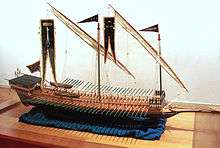
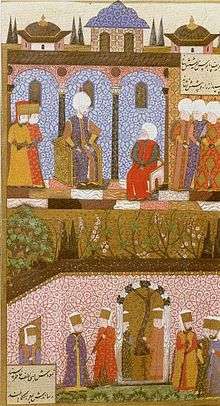
In the spring of 1544, after assaulting San Remo for the second time and landing at Borghetto Santo Spirito and Ceriale, Barbarossa defeated another Spanish-Italian fleet and raided deeply into the Kingdom of Naples. He then sailed to Genoa with his 210 ships and threatened to attack the city unless it freed Turgut Reis, who had been serving as a galley slave on a Genoese ship and then was imprisoned in the city since his capture in Corsica by Giannettino Doria in 1540. Barbarossa was invited by Andrea Doria to discuss the issue at his palace in the Fassolo district of Genoa, and the two admirals negotiated the release of Turgut Reis in exchange for 3,500 gold ducats. Barbarossa then successfully repulsed further Spanish attacks on southern France, but was recalled to Istanbul after Charles V and Suleiman had agreed to a truce in 1544.
After leaving Provence from the port of Île Sainte-Marguerite in May 1544, Barbarossa assaulted San Remo for the third time, and when he appeared before Vado Ligure, the Republic of Genoa sent him a substantial sum to save other Genoese cities from further attacks. In June 1544, Barbarossa appeared before Elba. Threatening to bombard Piombino unless the city's Lord released the son of Sinan Reis who had been captured and baptized 10 years earlier by the Spaniards in Tunis, he obtained his release.[7] He then captured Castiglione della Pescaia, Talamone and Orbetello in the province of Grosseto in Tuscany. There, he destroyed the tomb and burned the remains of Bartolomeo Peretti, who had burned his father's house in Mytilene the previous year, in 1543. He then captured Montiano and occupied Porto Ercole and the Isle of Giglio. He later assaulted Civitavecchia, but Leone Strozzi, the French envoy, convinced Barbarossa to lift the siege.
The Ottoman fleet then assaulted the coasts of Sardinia before appearing at Ischia and landing there in July 1544, capturing the city as well as Forio and the Isle of Procida before threatening Pozzuoli. Encountering 30 galleys under Giannettino Doria, Barbarossa forced them to sail away towards Sicily and seek refuge in Messina. Due to strong winds, the Ottomans were unable to attack Salerno but managed to land at Cape Palinuro nearby. Barbarossa then entered the Strait of Messina and landed at Catona, Fiumara and Calanna near Reggio Calabria and later at Cariati and at Lipari, which was his final landing on the Italian peninsula. There, he bombarded the citadel for 15 days after the city refused to surrender and eventually captured it.
He finally returned to Istanbul and, in 1545, left the city for his final naval expeditions, during which he bombarded the ports of the Spanish mainland and landed at Majorca and Minorca for the last time. He then sailed back to Istanbul and built a palace on the Bosphorus, in the present-day quarter of Büyükdere in the Sarıyer district.
Retirement and death
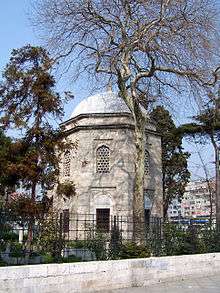
Barbarossa retired in Istanbul in 1545, leaving his son Hasan Pasha as his successor in Algiers. He then dictated his memoirs to Muradi Sinan Reis. They consist of five hand-written volumes known as Gazavat-ı Hayreddin Paşa (Conquests of Hayreddin Pasha). Today, they are exhibited at the Topkapı Palace and Istanbul University Library. They are prepared and published by Babıali Kültür Yayıncılığı as Kaptan Paşa'nın Seyir Defteri (The Logbook of the Captain Pasha) by Prof. Dr. Ahmet Şimşirgil, a Turkish academic. They are also fictionalised as Akdeniz Bizimdi (The Mediterranean was Ours) by M. Ertuğrul Düzdağ. Barbarossa is also one of the main characters in Mika Waltari's book The Wanderer (1949).
Barbarossa Hayreddin Pasha died in 1546 in his seaside palace in the Büyükdere neighbourhood of Istanbul, on the northwestern shores of the Bosphorus. He is buried in the tall mausoleum (türbe) near the ferry port of the district of Beşiktaş on the European side of Istanbul, which was built in 1541 by the famous architect Mimar Sinan, at the site where his fleet used to assemble. His memorial was built in 1944, next to his mausoleum.
The Flag (Sanjak) of Hayreddin Barbarossa

The Arabic calligraphy at the top of the standard reads, " نَصرٌ مِنَ اللَّـهِ وَفَتحٌ قَريبٌ وَبَشِّرِ المُؤمِنينَ يَا مُحَمَّد (nasrun mina'llāhi wa fatḥhun qarībun wa bashshiri'l-mu’minīna yā muḥammad), translated as "Victory from Allah and an eminent conquest; and give good tidings to the believers, O Muhammad." The text comes from verse 61:13 of the Quran, with the addition of "O Muhammad", since the last part of the verse addresses the Islamic prophet, Muhammad.[10]
Within the four crescents are the names, from right to left, beginning at the top right, of the first four caliphs — Abu Bakr, Umar, Uthman, and Ali — whose rule of the Islamic state after Muhammad is referred to as the Rashidun Caliphate.
The two-bladed sword represents Dhu'l-Fiqar, a famous sword in Islamic history, belonging first to Muhammad and then Ali. To the left of the sword's hilt is a small hand.[11]
Between the two blades of the sword is a six-pointed star. The star may be confused with the Star of David, a Jewish symbol. However, in medieval times, this star was a popular Islamic symbol known as the Seal of Solomon and was widely used by the Beyliks of Anatolia. The seal was later used by the Ottomans in their mosque decorations, coins and the personal flags of the pashas, including Hayreddin Barbarossa.[12] One of the Turkish beyliks known to use the seal on its flag was the Jandarids. According to the Catalan Atlas of 1375 by A. Cresques, the flag of the Karamanids, another Anatolian beylik, consisted of a blue six-edged star.[13]
Legacy
Hayreddin Barbarossa established the Ottoman supremacy in the Mediterranean, which lasted until the Battle of Lepanto in 1571. However, even after their defeat in Lepanto, the Ottomans quickly rebuilt their fleet, regained Cyprus and other lost territories in Morea and Dalmatia from the Republic of Venice between 1571 and 1572, and reconquered Tunisia from Spain in 1574. Furthermore, the Ottomans ventured into the northern Atlantic Ocean between 1585 and 1660 and continued to be a major Mediterranean sea power for three more centuries, until the reign of Sultan Abdülaziz (r. 1861–1876) in the 19th century (in 1875 the Ottoman Navy had 21 battleships and 173 other types of warships, ranking as the third-largest naval force in the world, after the British and French navies.)
However, during these centuries of great seamen such as Kemal Reis before him; his brother Oruç Reis and other contemporaries Turgut Reis, Salih Reis, Piri Reis and Kurtoğlu Muslihiddin Reis; or Piyale Pasha, Murat Reis, Seydi Ali Reis, Uluç Ali Reis and Kurtoğlu Hızır Reis after him, few other Ottoman admirals ever achieved the overwhelming naval power of Hayreddin Barbarossa.
His mausoleum is in the Barbaros Park of Beşiktaş, Istanbul, where his statue also stands, right next to the Istanbul Naval Museum. On the back of the statue are verses by the Turkish poet Yahya Kemal Beyatlı, which may be translated as follows:[14]
Whence on the sea's horizon comes that roar?
Can it be Barbarossa now returning
From Tunis or Algiers or from the Isles?
Two hundred vessels ride upon the waves,
Coming from lands the rising Crescent lights:
O blessed ships, from what seas are ye come?
Barbaros Boulevard starts from his mausoleum on the Bosphorus and runs all the way up to the Levent and Maslak business districts and beyond. He gave his name to Üsküdar and Eminönü port (before 10 January 2009, Kadıköy) in Beşiktaş.
In the centuries following his death, even today, Turkish seamen salute his mausoleum with a cannon shot before leaving for naval operations and battles.
Several warships of the Turkish Navy and passenger ships have been named after him.
References to Hayreddin Barbarossa in fiction
- The Nintendo 3DS game Bravely Default features a pirate captain named Hayreddin Barbarossa.[15]
- In the 2011 TV show Muhteşem Yüzyıl he is portrayed by Tolga Tekin.
See also
Notes
- 1 2 Niccolò Capponi (April 2007). Victory of the West: the great Christian-Muslim clash at the Battle of Lepanto. Da Capo Press. p. 30. ISBN 978-0-306-81544-7.
- 1 2 H. J. Kissling; F. R. C. Bagley; N. Barbour; Bertold Spuler; J. S. Trimingham; H. Braun; H. Hartel (1997). The Last Great Muslim Empires. BRILL. p. 114. ISBN 90-04-02104-3.
Their father was former Muslim soldier, probably from a recent converted family of the European Provinces. Their mother is said to have been the widow of a Greek priest.
- 1 2 Bozbora, Nuray (1997). Osmanlı yönetiminde Arnavutluk ve Arnavut ulusçuluğu'nun gelişimi. p. 16.
- 1 2 Kiel, Michael (2007). The Smaller Aegean Islands in the 16th-18th Centuries according to Ottoman Administrative Documents. Between Venice and Istanbul: Colonial Landscapes in Early Modern Greece. ASCSA. pp. 35–. ISBN 978-0-87661-540-9.
[p. 36:] ...Ottoman admiral Hayreddin Barbarossa (son of a Turkish sipahi [fief-holder in the cavalry service]) from Yenice-i Vardar in Macedonia and a Greek woman from Lesvos/Mytilini)...
- ↑ Andreas Rieger (1994). Die Seeaktivitäten der muslimischen Beutefahrer als Bestandteil der staatlichen Flotte während der osmanischen Expansion im Mittelmeer im 15. und 16. Jahrhundert. Klaus Schwarz Verlag. p. 548. ISBN 978-3-87997-223-4.
- ↑ Suleiman the Magnificent 1520–1566 Roger Bigelow Merriman p.140
- 1 2 Kritzler, Edward (November 3, 2009). Jewish Pirates of the Caribbean. Anchor. pp. 59–60. ISBN 978-0-7679-1952-4. Retrieved 2010-05-02.
- ↑ History of Corfu
- ↑ History of Corfu Archived 6 January 2008 at the Wayback Machine.
- ↑ Quran [http://www.perseus.tufts.edu/hopper/text?doc=Perseus%3Atext%3A2002.02.0006%3Asura%3D61%3Averse%3D13 61:13–13] (Translated by Sahih International). "And [you will obtain] another [favor] that you love - victory from Allah and an imminent conquest; and give good tidings to the believers."
- ↑ Sache, Ivan. "Ottoman Empire: Flags with the Zulfikar sword".
- ↑ http://www.fahnenversand.de/fotw/misc/tr~barb.jpg
- ↑ http://upload.wikimedia.org/wikipedia/commons/c/c7/Catalan-Atlas_-_1.png
- ↑ Translation by John Freely in Strolling through Istanbul, p. 467, Sev Yayıncılık, 1997
- ↑ https://www.nintendo.co.uk/News/2014/March/An-introduction-to-the-foes-of-Bravely-Default-861399.html
References
- Currey, E. Hamilton (1910). Sea-Wolves of the Mediterranean. London.
- Bono, Salvatore (1993). Corsari nel Mediterraneo. Perugia: Oscar Storia Mondadori.
- "Corsari nel Mediterraneo: Condottieri di ventura. Online database in Italian, based on Salvatore Bono's book.".
- Bradford, Ernle (1968). The Sultan's Admiral: The life of Barbarossa. London.
- Wolf, John B. (1979). The barbary coast : Algiers under the Turks : 1500 to 1830 (1st ed.). New York: W. W. Norton & Company. ISBN 0-393-01205-0.
- "The Ottomans: Comprehensive and detailed online chronology of Ottoman history in English.".
- "Turkish Navy official website: Historic heritage of the Turkish Navy (in Turkish)".
External links
| Wikimedia Commons has media related to Barbaros Hayreddin Pasha. |
| Look up Barbarossa in Wiktionary, the free dictionary. |
| Wikisource has the text of the 1911 Encyclopædia Britannica article Barbarossa. |
- Encyclopædia Britannica
- An article on the Barbarossa brothers
- Another article on the Barbarossa brothers
- Original Gazawat by Seyyid Muradi
- Hayreddin Barbarossa's tomb in Beşiktaş
- Hayreddin Barbarossa'nın Hatıraları (Memoirs of Hayreddin Barbarossa in Turkish)
